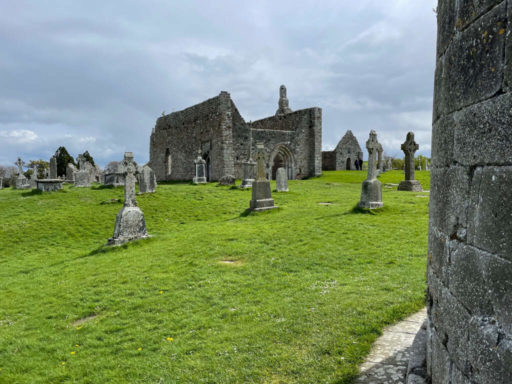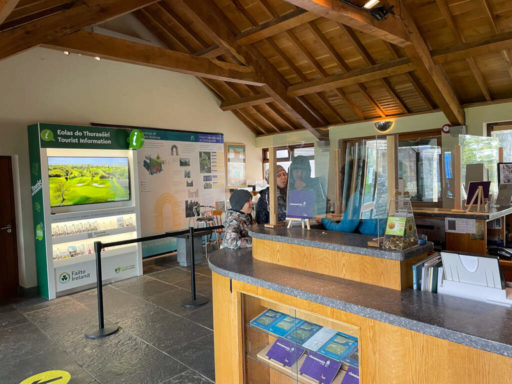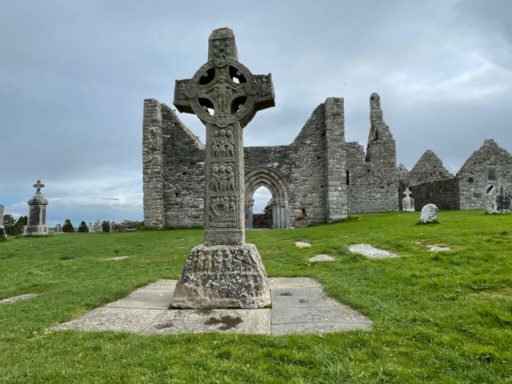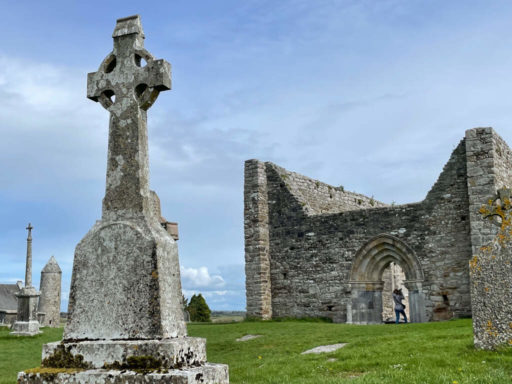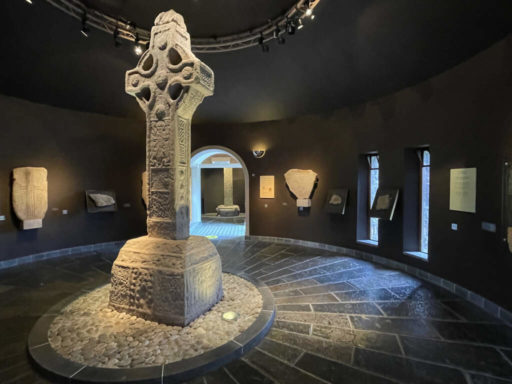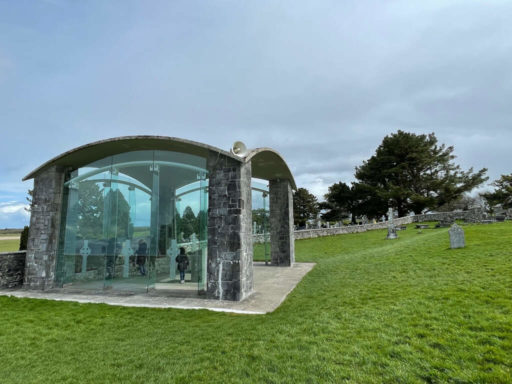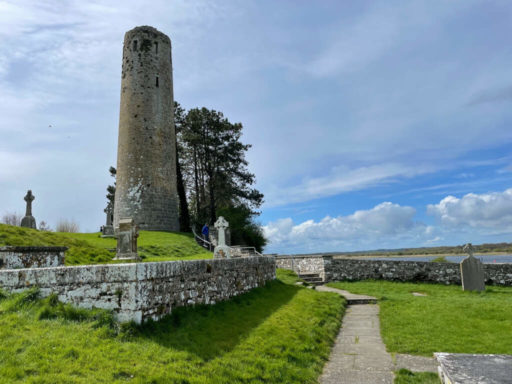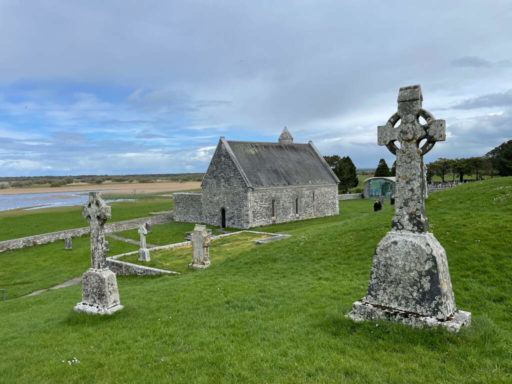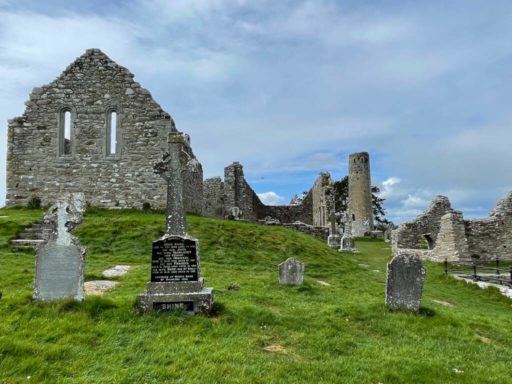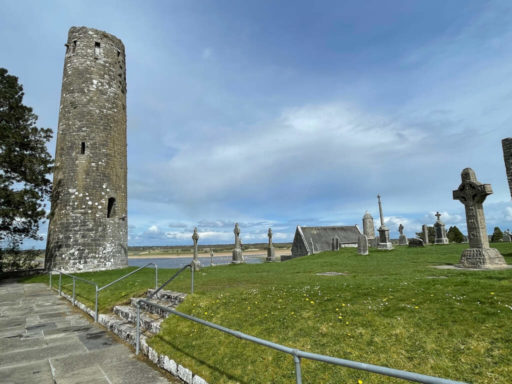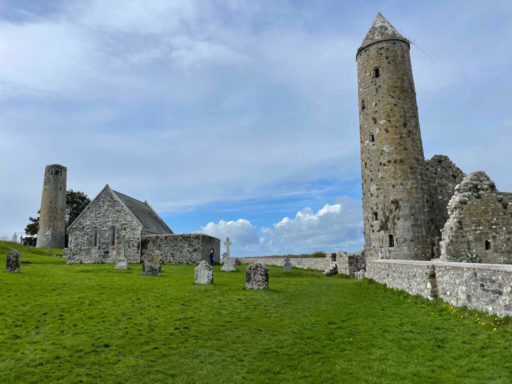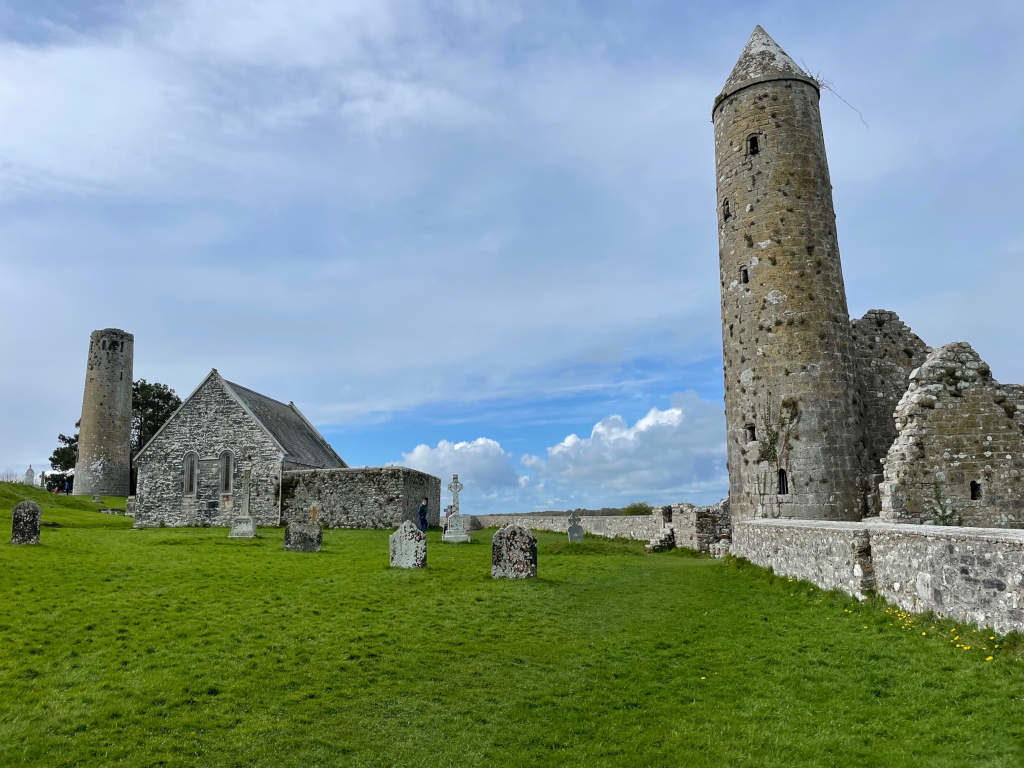
Clonmacnoise Monastery
One of the most important early Christian sites in Europe
Clonmacnoise Monastery, situated overlooking the immense River Shannon, is one of the most famous monastic sites in Ireland. Founded by Saint Ciaran in the 6th century, is one of Europe’s oldest and most important early Christian communities. Less than 1 hour drive from Galway, it offers an interesting and memorable day trip when visiting the city of the tribes.
The Location
It was built in the heart of Ireland, where the ancient Esker Riada trail crossed the River Shannon. The Esker Riada, a raised natural feature of sand and stone which was formed towards the end of the last glacial period, was the country’s most important land-based route for Ireland’s early inhabitants. Running east to west across Ireland, this ‘Slí Mór’ (the great way) crossed the Shannon at a point close to the site of Clonmacnoise. The significant strategic location formed part of the reason why St. Ciarán chose this location to set-up his monastery here.
Buildings and artefacts
The buildings at Clonmacnoise are mostly in ruins today, but there is plenty to see, including some of the most old and valuable treasures in Irish Christian history.
High Crosses
Three historic enormous crosses stand in a semi-circle around the Cathedral, although the ones on display today are reproductions; the originals are safely stored inside the interpretive centre to avoid deterioration.
The Cross of the Scriptures is the most famous, with scenes from the Bible intricately etched on all of its surfaces. It was built for Flann Sinna, High King of Ireland from 879 to 916, and was likely built at the same time as the cathedral.
Many of the other crosses you find in graveyards are much later in origin and are modeled after the early crosses.
The Whispering Arch
This Gothic-style entryway, which leads to the Cathedral’s north entrance, was previously a confessional, according to folklore.
Both the priest and the penitent would face the wall on opposite sides of the entrance and whisper to the stone. Their voices were drifted around the bend of the door, unheard by anybody else.
Over time, this became a gathering spot for couples to express their genuine sentiments to one another.
Regardless of the legend’s veracity, it works!
Churches and Two Round Towers
Only a couple of the ten churches that formerly existed here are still intact.
The cathedral is the largest of these, having been constructed in an extravagant style with many Gothic characteristics around the beginning of the 11th century. Turlough O’Connor and his son Rory, Ireland’s last high monarch, were buried here in 1156 and 1198, respectively.
MacLaffey’s Church dates from the tenth century, although it was enlarged and reconstructed in the seventeenth and eighteenth centuries, when it became a Church of Ireland parish church. It was eventually replaced with the smaller, less beautiful Temple Connor, which is still used as a parish church today.
In 1124, the Round Tower was completed. It was severely damaged by lightning in 1135, and the top half was rebuilt subsequently. It’s now 119 feet tall, although it used to be roughly a third higher.
The Normans built a castle near the river’s edge in 1214, and it is still standing today.
More than 600 carved cross-slabs or memorial stones have been discovered at Clonmacnoise, dating from the 8th to the 12th century. Surprisingly, the majority of them still have names that can be read.
What to expect at Clonmacnoise
Advice for your visit to Clonmacnoise
The site is now managed by the Office of Public Works (OPW), which does wonderful in maintaining the ongoing preservation program and keep it open to the public all year. In the interpretive centre, there is a very interesting short audio-visual show that provides almost vital background information prior to an exploration of the site; make sure to view it, to fully appreciate the rich history of the place.
A guided tour of Clonmacnoise is also highly recommended, as so much of the site is in ruins, which makes it a little challenging to understand how the various structures relate to one another and how they were utilized. Having a professional guide explain it all is both fascinating and instructive. The tours run about 45 minutes and are included in the admission fee, which is waived if you have a Heritage Card.
Opening times
Low season (Sept – March): 10:00 – 17:00 daily
High season (Apr – Aug): 10:00 – 18:00 daily
How to get to Clonmacnoise
Clonmacnoise FAQs
What is Clonmacnoise famous for?
Clonmacnoise, one of Europe’s most sacred monastic sites, is located close to Shannonbridge, County Offaly, beside the Shannon River. A stroll around the quiet stone ruins of this iconic location will conjure visions of Ireland’s renowned golden age of saints and scholars.
Is Clonmacnoise worth visiting?
Is Clonmacnoise free?
No, but tickets are quite cheap and well worth it for the experience.
Adult: €8.00
Group/Senior: €6.00
Child/Student: €4.00
Family: €20.00
It is recommended to purchase tickets in advance through the Heritage Ireland website.
